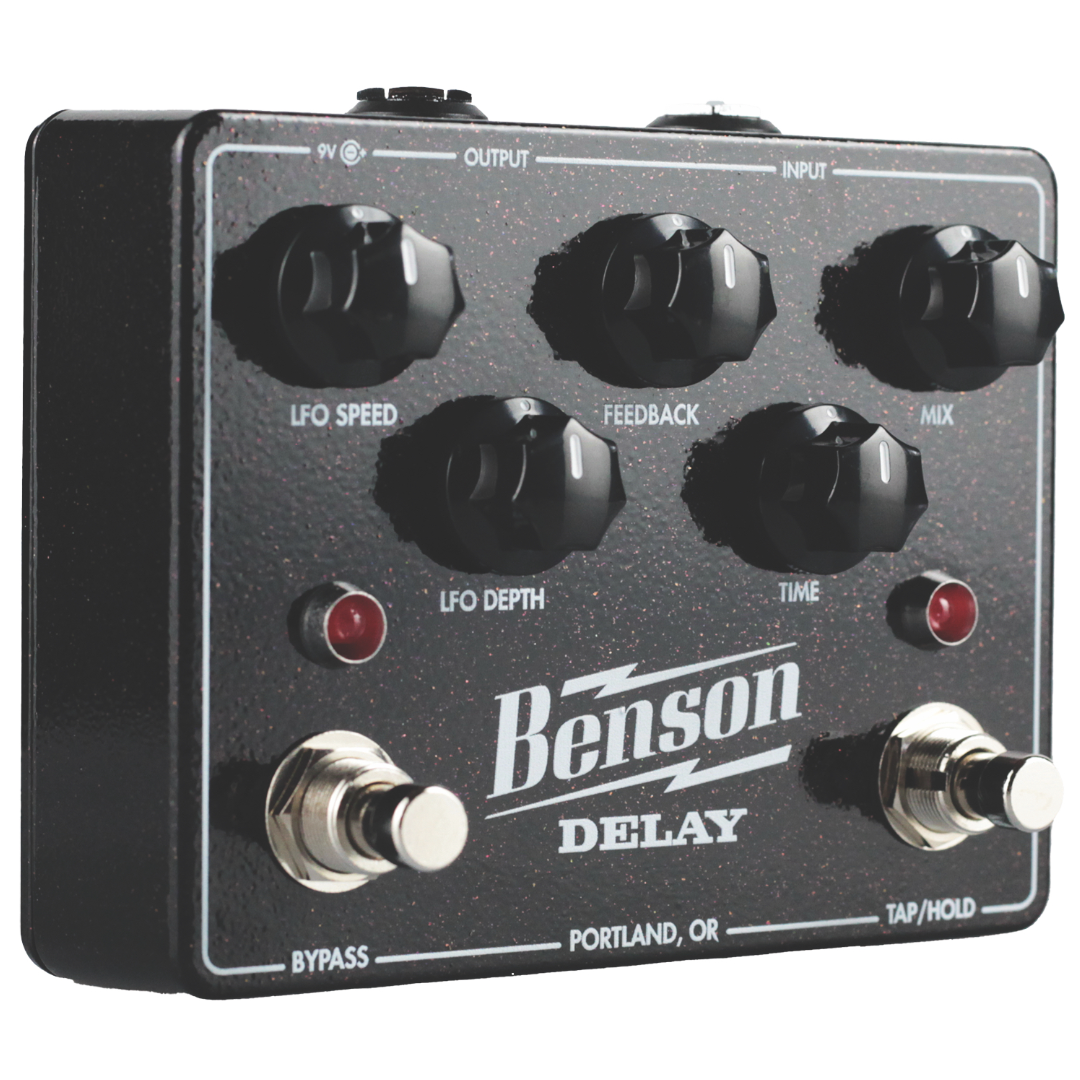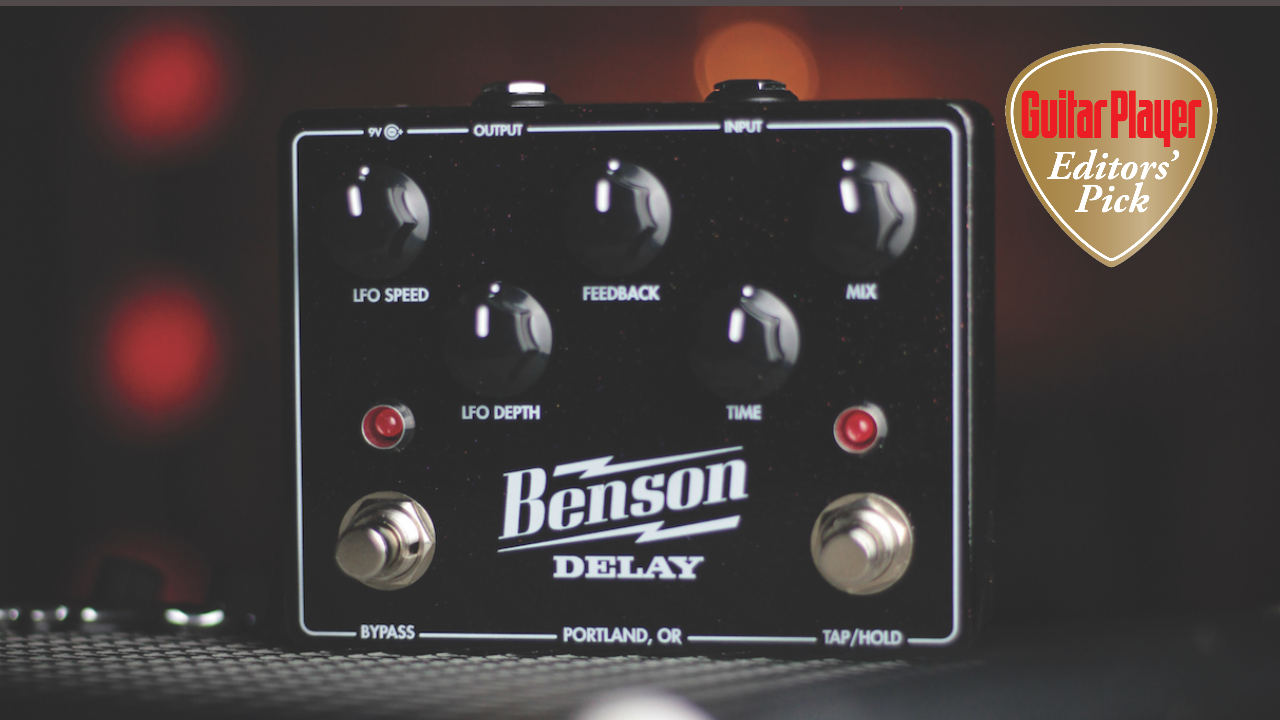GuitarPlayer Verdict
Packing tons of functionality with nearly limitless note-bending and deep-warbling modulation in a compact metal box. Well deserving of an Editors’ Pick Award
Pros
- +
Great sounding analog delay with surprising versatility in a relatively simple package
Cons
- -
Given the wide range of most parameters it takes a delicate touch to fine-tune some control settings
You can trust Guitar Player.
I first encountered the work of amplifier and pedal maker Chris Benson of Portland, Oregon, while reviewing his Monarch amp and Tall Bird reverb unit for GP. That hand-wired tube amp impressed me immensely and has since become widely regarded as among the upper echelon of today’s boutique creations, along with everything else Benson has brought to market since.
On the pedal front, the new Benson Delay is the fifth stompbox in the company’s lineup, but it’s the first to deviate from the gain-based boosts and fuzzes in the range.
One of the first questions asked and answered in any delay-pedal review must be: Is it analog or digital? The Benson Delay is actually a clever combination of both worlds. Benson calls it “a PT2399 [digital] chip in a bucket-brigade delay wrapper, drawing the best from both technologies which has resulted in an extremely wide-ranging and versatile design.”
At the heart of it all is the Bontempo open-source delay technology developed by Antoine Ricoux. Together, these devices allow the pedal to produce from 30ms to 1,250ms of delay — fast enough to produce a chorus effect and long enough for extremely atmospheric echoes. In addition, the Bontempo tech provides a controllable LFO for modulation effects.
The Benson Delay isn’t overly capacious in its compact metal box, and the controls for LFO speed, LFO depth, feedback, time and mix, plus foot switches for bypass and tap/hold (the latter an oscillation hold) present enough control for creative modern soundscaping without requiring so many fiddly parameters to turn off the purists.
Use of both foot switches together (thoroughly explained in the manual) accesses the tap divisions menu and your choice of sine, square or random waveforms for the LFO. “We are all about function here,” Chris Benson tells us. “The Delay, for me, is my ideal tool for studio and stage. It’s designed to get great sounds quickly when needed, but it can be weird and extreme for experimentation as well.”

I tested the Benson Delay with a Fender Jazzmaster and a Gibson Firebird V Reissue into a 65amps London head and 2x12 cab, a tweed Deluxe-style 1x12 combo and a Fractal FM9 modeler.
Throughout my testing, the Benson Delay delivered rich, characterful echoes and modulation couched in a deceptively wide-ranging and versatile control interface. In terms of its sound, the Benson Delay reminds me how easy it is to sink into a good analog unit and roll with it, vibing off the warmth and dimension this type of echo provides.
Just a touch of LFO adds the subtle modulation that gives depth and texture to an otherwise straight echo sound. Beyond there, you’ll find nearly limitless note-bending and deep-warbling modulation that constitutes a creative tool in and of itself. It can all be too much at the extremes, but better that than too little. For that matter, there’s an astounding range of sounds lurking between the two LFO controls.
Given the delay’s wide range — and the ranges of the LFO and feedback controls, for that matter — the knobs can be a little hair trigger, taking you to unexpected depths and lengths surprisingly quickly.
Of course, the tap button helps in one regard there, but the others require a fine touch. But that’s a small price to pay for the tons of functionality on offer in this pedal.
All in all, the Benson Delay is a great addition to the market, and is well deserving of an Editors’ Pick Award.
Specifications
- CONTROLS Time, mix, feedback, LFO speed, LFO depth. Foot switches for bypass and Tap/Hold
- FEATURES Built-in LFO/modulation effect, oscillation Hold foot-switch, center-negative 9V input
- SIZE 4.5” x 3.5” x 1.35” (WxDxH)
- BUILT USA
For more information visit bensonamps.com
Dave Hunter is a writer and consulting editor for Guitar Player magazine. His prolific output as author includes Fender 75 Years, The Guitar Amp Handbook, The British Amp Invasion, Ultimate Star Guitars, Guitar Effects Pedals, The Guitar Pickup Handbook, The Fender Telecaster and several other titles. Hunter is a former editor of The Guitar Magazine (UK), and a contributor to Vintage Guitar, Premier Guitar, The Connoisseur and other publications. A contributing essayist to the United States Library of Congress National Recording Preservation Board’s Permanent Archive, he lives in Kittery, ME, with his wife and their two children and fronts the bands A Different Engine and The Stereo Field.
"The only thing missing is the noise from the tape loop." We review the Strymon EC-1 Single Head dTape Echo, a convincing take on a very special vintage tube Echoplex
"BigSky MX will be replacing the BigSky as my go-to reverb pedal. I’ve heard nothing that covers all the bases with such pristine and detailed audio quality." We crowned the Strymon BigSky MX the champ of multi-reverb pedals












